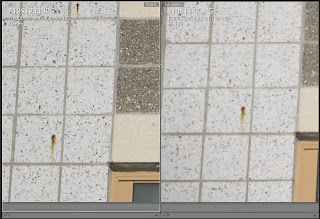Like most cameras with manual controls, AutoISO is available in at least P, S and A modes. With Olympus, and this has been true since the E-520, you do need to go into the menu to activate AutoISO in M mode. By the way, I also have ISO set to show 1/3 stops. For me, these settings work nicely together.
[Menu > cog E > ISO Auto > All]
[Menu > cog E > ISO Step > 1/3 EV]
 |
| Having Fun with Cake and Ice Cream |
Accurate camera metering is very important when using M-mode and AutoISO because, at least with the Olympus system, there is no way to engage EV compensation (in this instance only... Note: I am just talking about M mode with AutoISO.) For example, if you try to underexpose by increasing shutter speed from, say, 1/125th to 1/250th, AutoISO will counter-compensate by increasing the ISO by one stop.
If you find the camera is under- or over-exposing when using this set up, you will need to do one of the following:
1. Ignore it and shoot in RAW. I feel pretty comfortable in Lightroom making exposure adjustments that are up to one stop more/less than the original shot.
or
2. Bracket your shots, and pick the best one. If the child's expression changes during, say, three bracketed shots, just take the first one and proceed as described in #1 above.
or
3. Switch from the default ESP metering to either center-weighted metering or spot metering. It may give you a more accurate exposure. If you can meter accurately, there is no need for EV compensation.
or
4. Go to the menu to set a permanent adjustment to the exposure meter.
[Menu > Cog K Utility > Exposure Shift]
From here you can create an exposure shift up of to +/- 1 stop, and you can do so for spot metering, center-weighted metering, or evaluative metering, or any combination thereof. The adjustment is made in 1/6 stop increments.
or
5. Revert to manually setting the ISO. The lever on the back of the E-M1, when put in position 2, allows the front control wheel to be available to adjust ISO. This operation is smooth, and easily done with your right forefinger. This is something that you could not do on the E-M5. Although the histogram disappears temporarily while you are making the ISO adjustment, you do see the effect on an EV scale ranging from -3 to +3. I would prefer to use AutoISO during the heat of action, but manual ISO will give you your desired exposure... assuming you remember to use it!
or, perhaps the best option altogether
5. Switch to A-mode (aperture priority) because EV compensation is available in this mode. For kid pictures I like 1/125sec as the minimum shutter speed necessary to freeze the action (unless we're talking about kids playing soccer, etc.) Olympus has a setting that allows you to set the minimum shutter speed. Some have called this an "undocumented" feature because the manual only addresses its use with flash photography. What you do is use the Slow Limit shutter setting. Choose a speed up to 1/320sec. Even if you aren't using a flash this setting will result in a minimum shutter speed. This makes A-mode very flexible.
[Menu > Cog F > Slow Limit > pick 1/125sec or a number between 30 seconds and 1/320]
















